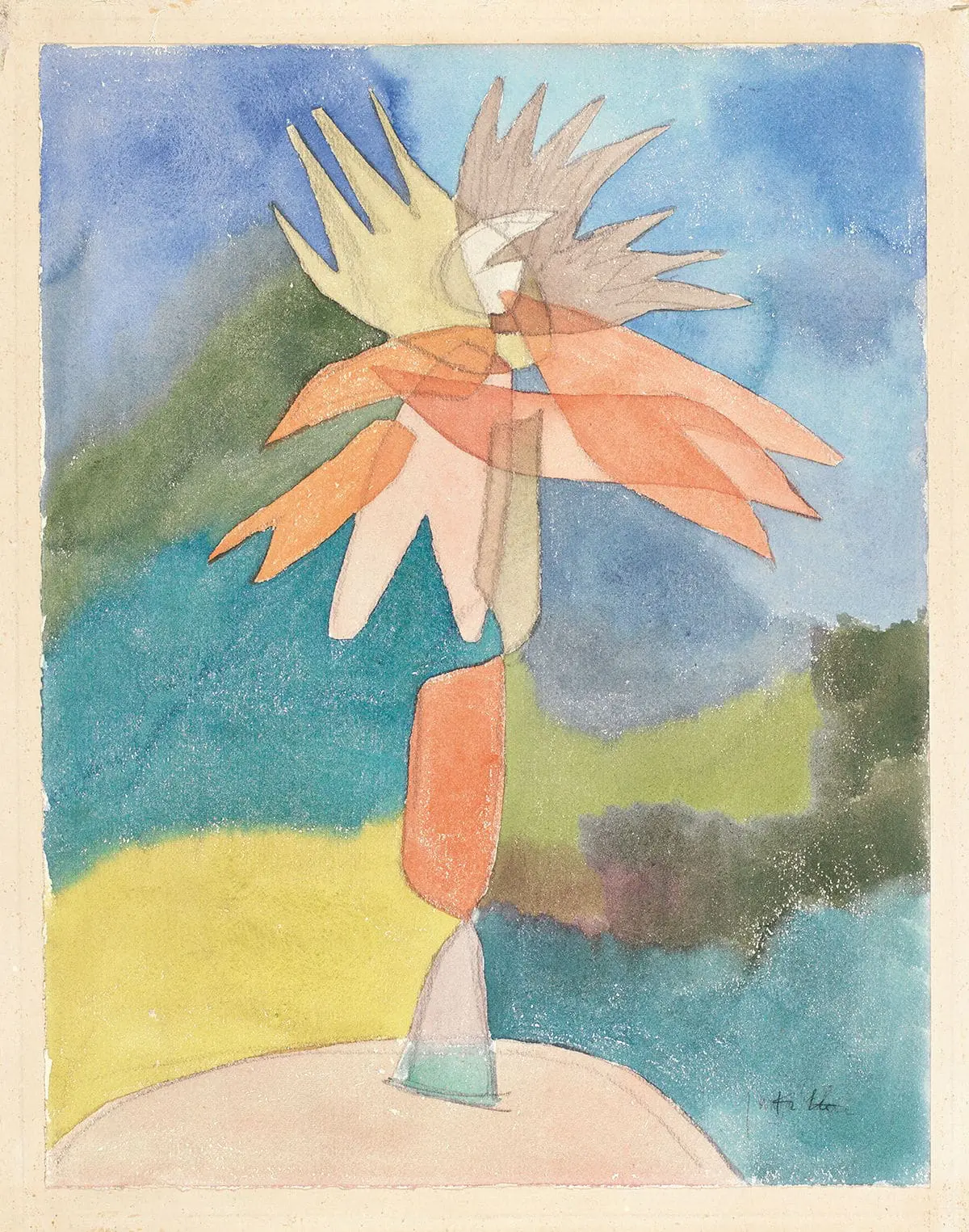COLLECTIONS CATALOG
Young Palm Tree is part of a series of watercolors containing natural motifs that Paul Klee produced in 1929. In this example, Klee structured formal elements that he had been researching since 1914 with original aspects charactersitic of his work from this period. Among the former, the checkerboard that configures the center of the motif becomes the axis of this composition, extending throughout the plant’s extremeties and transforming it into a sumptuous flower.Among the latter, the artist divided the space into framgments that combine the many chromatic elements, simultaneously establishing the differences between one another and their continuty.
The formal composition also utilizes other devices that are common to Klee’s work and cannot be overlooked. The chromatic echoes present throughout the watercolor’s distinct sections—which are musical and reminiscent of sound—are also worth mentioning.These include the pink hues on the upper part of the palm tree and its trunk, the light yellow coloration of the plant and the surrounding area, and the violet and blue tones, which are occasionally gradated. The image embodies simplicity and beauty. Never has there been a plant that was both as artificial and natural as this one. Perhaps this is one of the defining traits of Klee’s art: his ability to “invent” such lifelike nature without concealing the devices used to accomplish it, but rather making them explicit.
Other autor artworks

